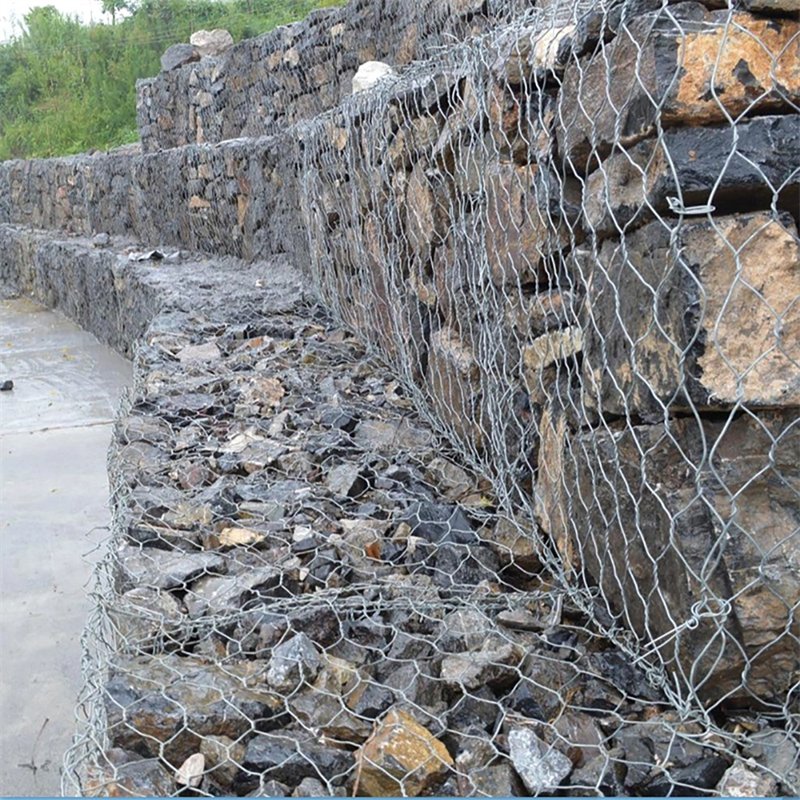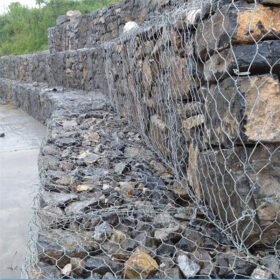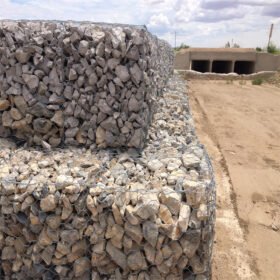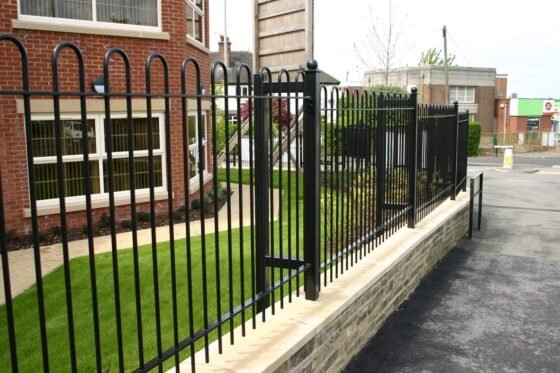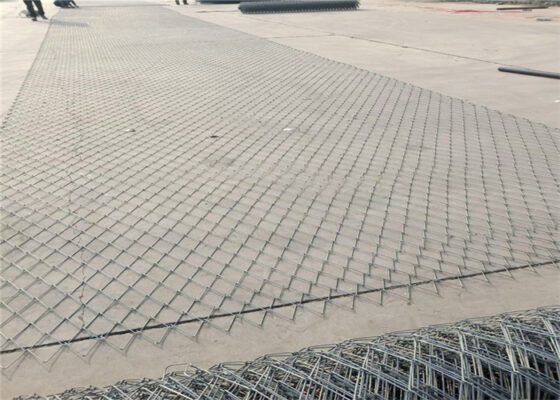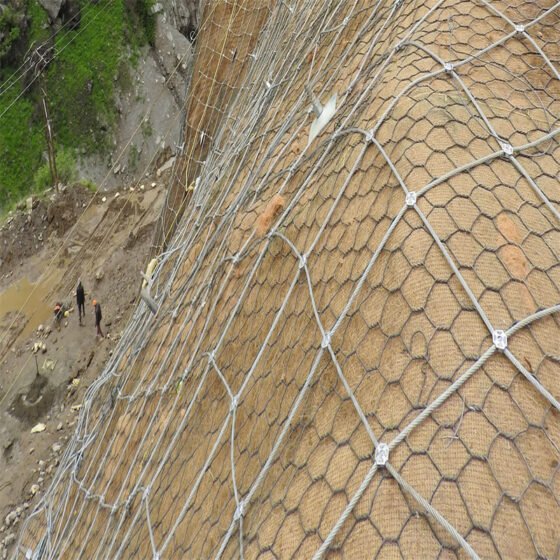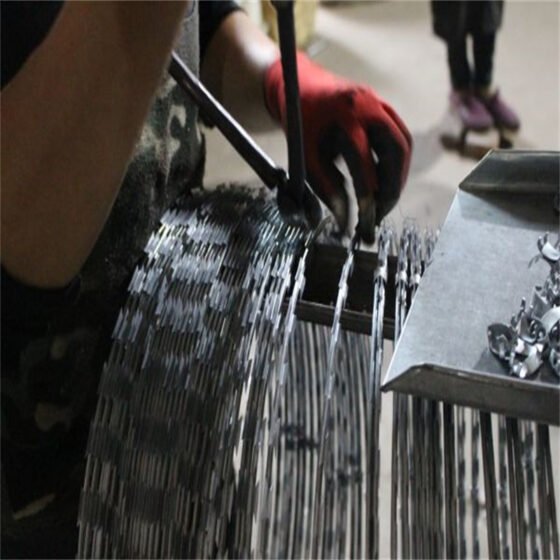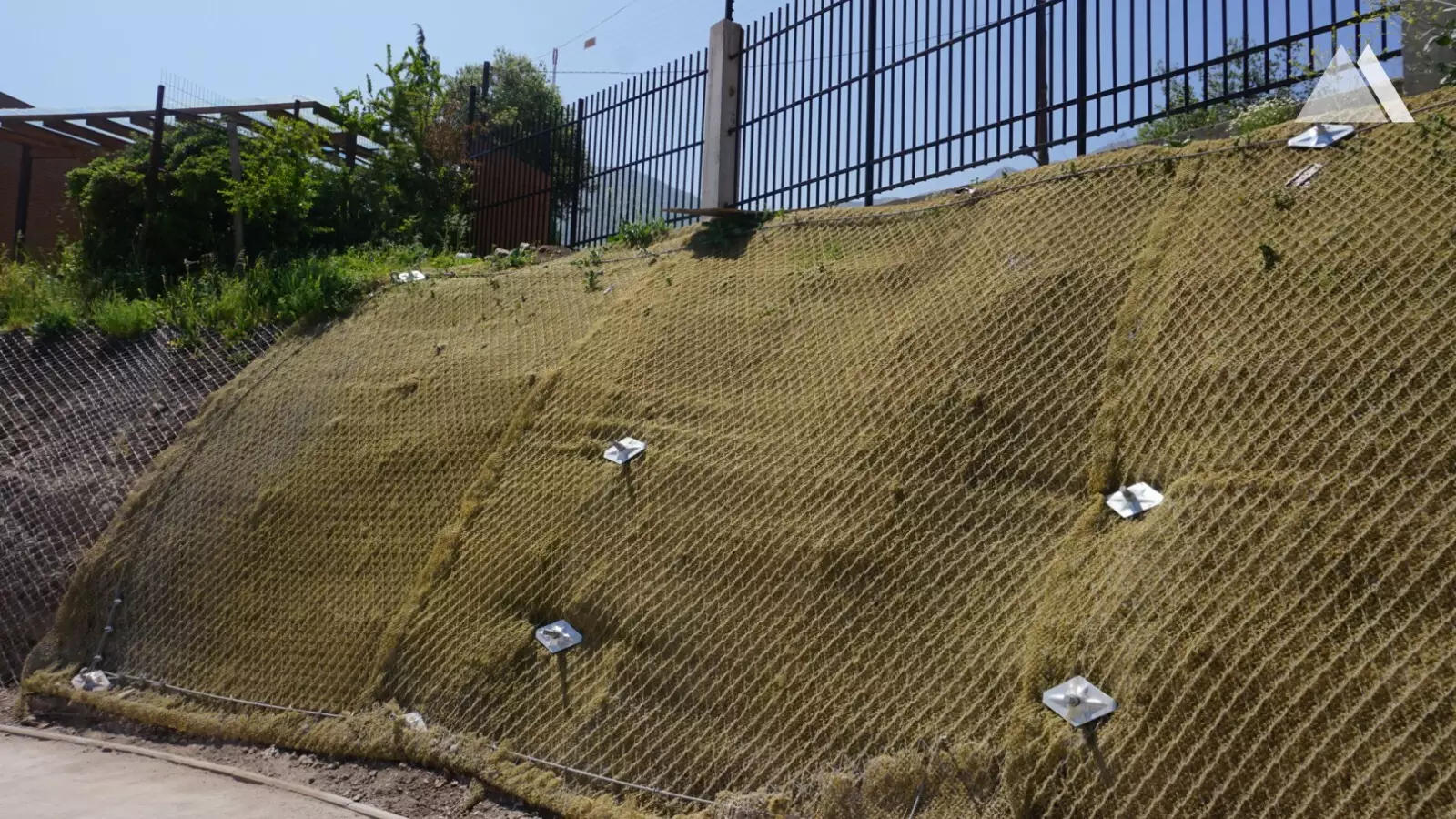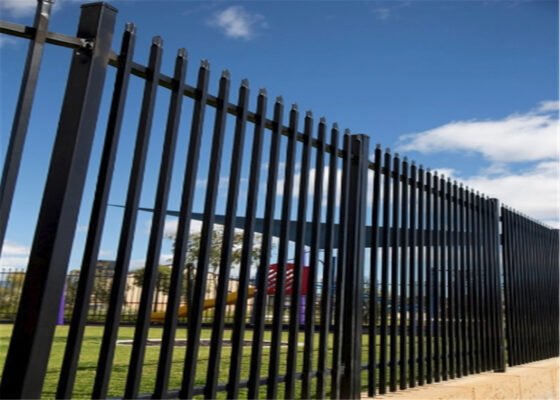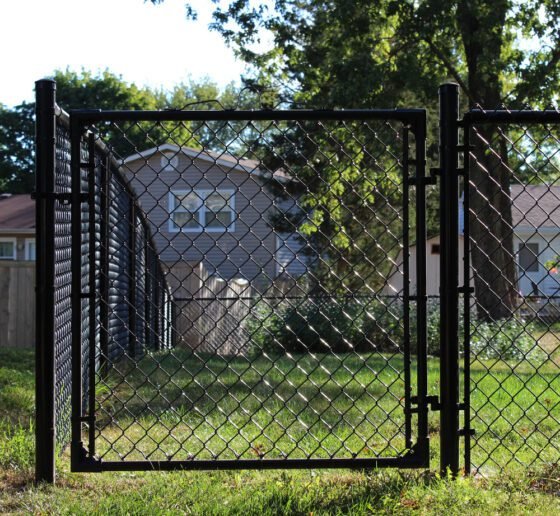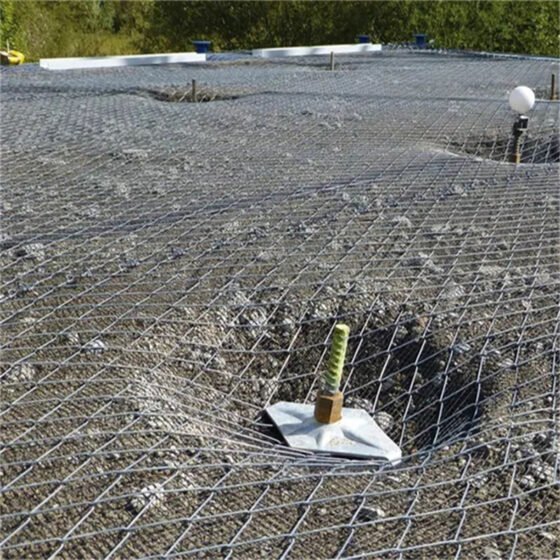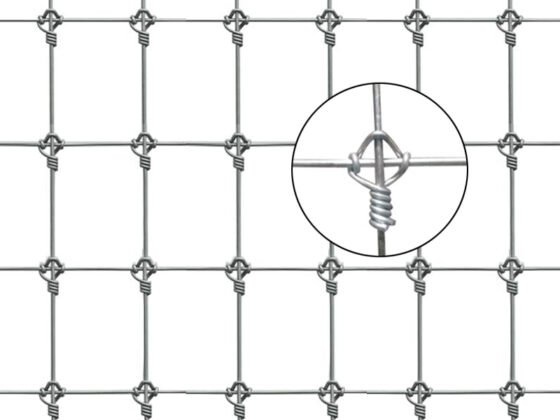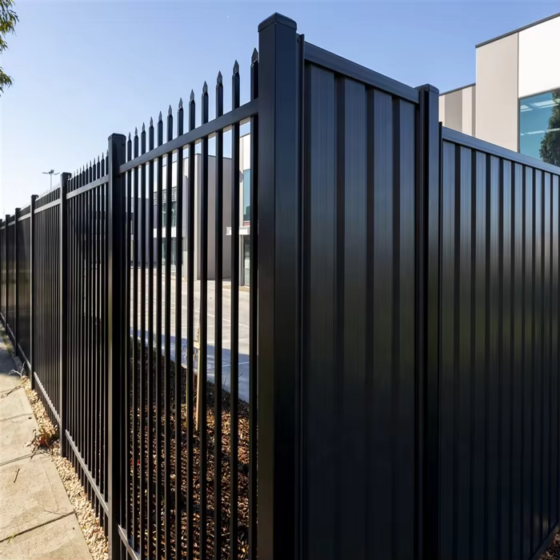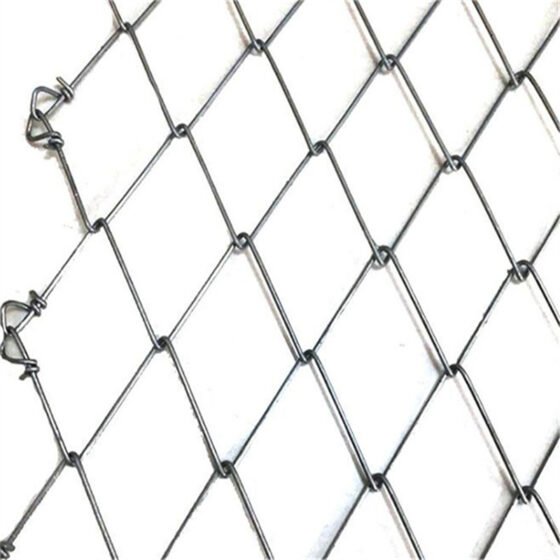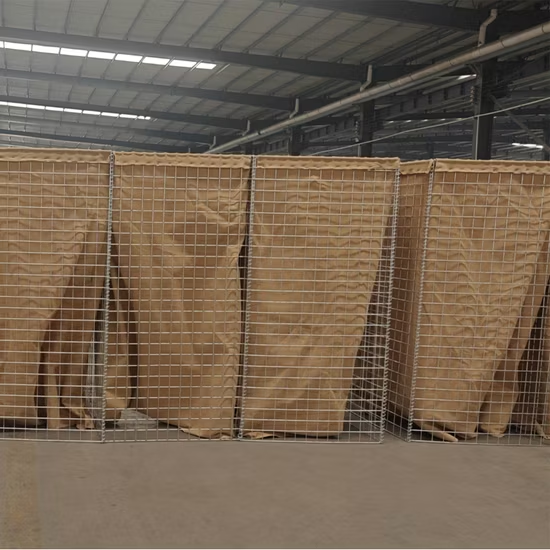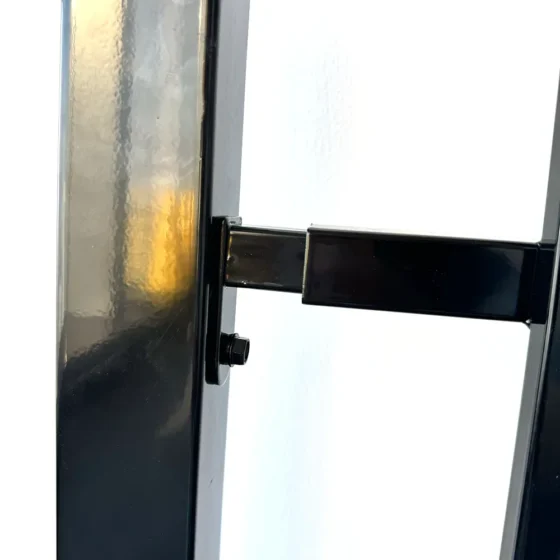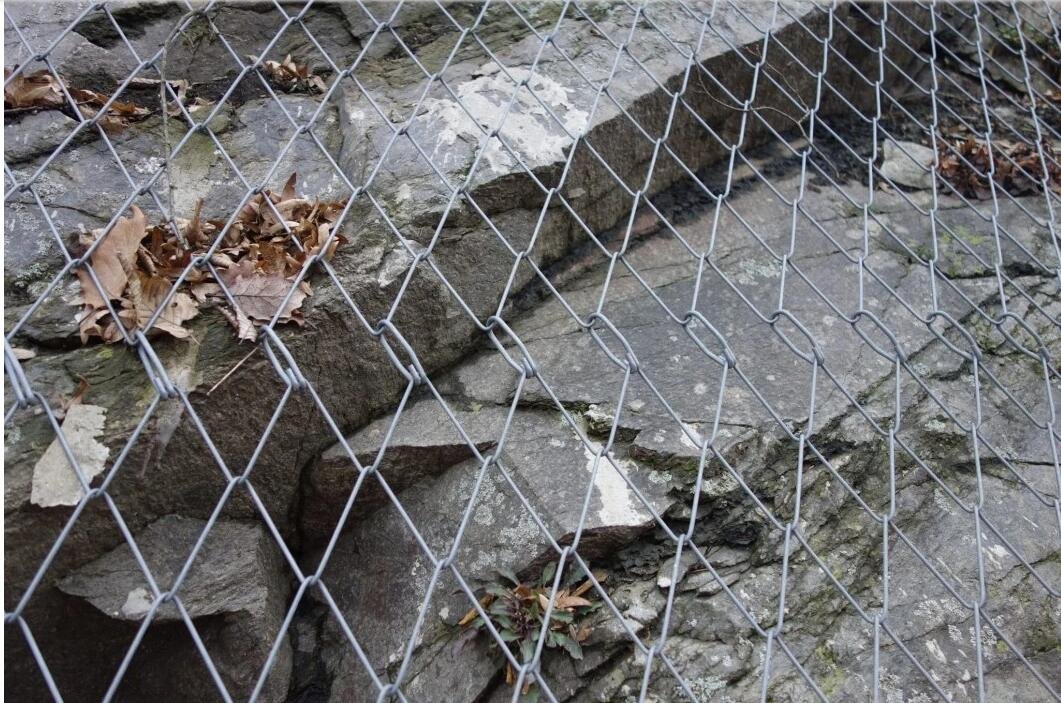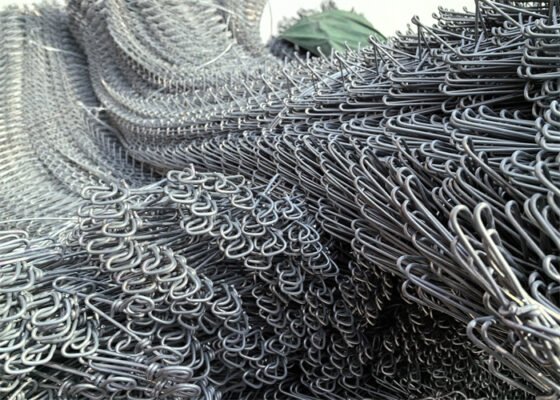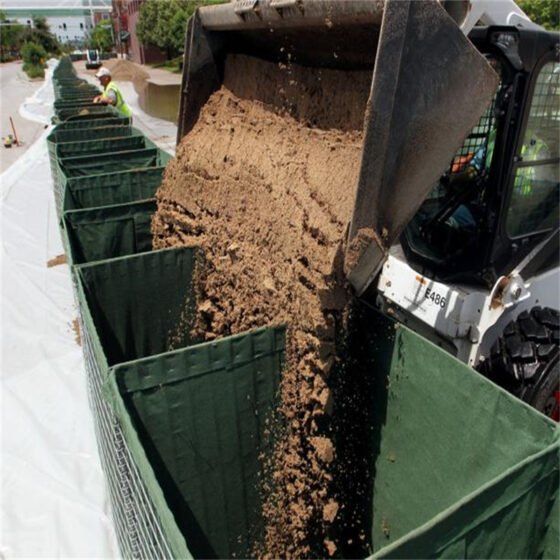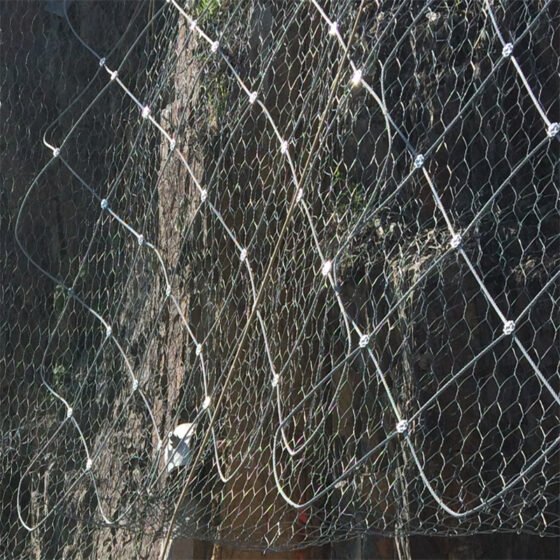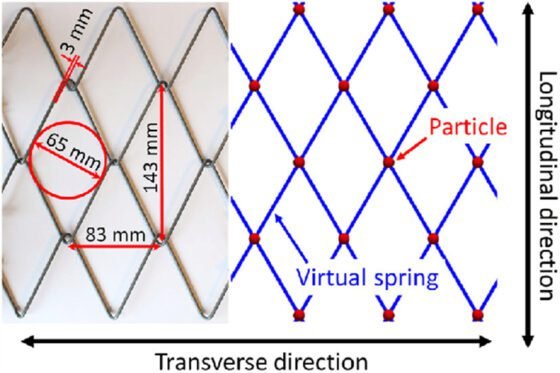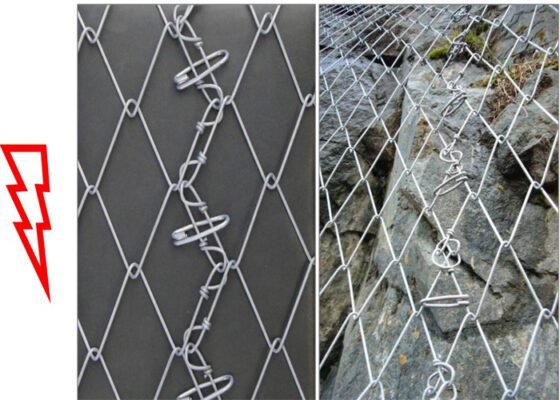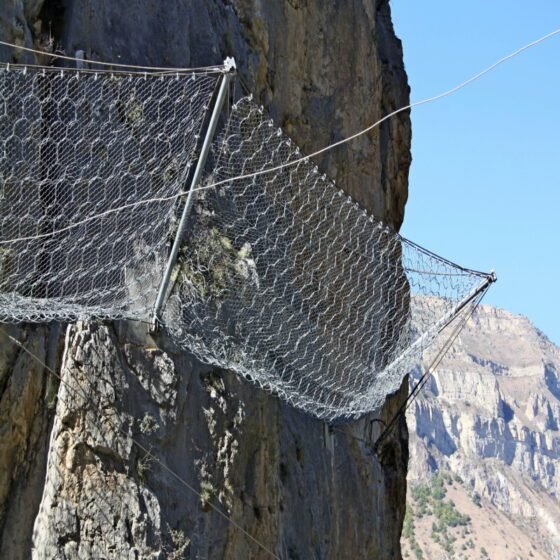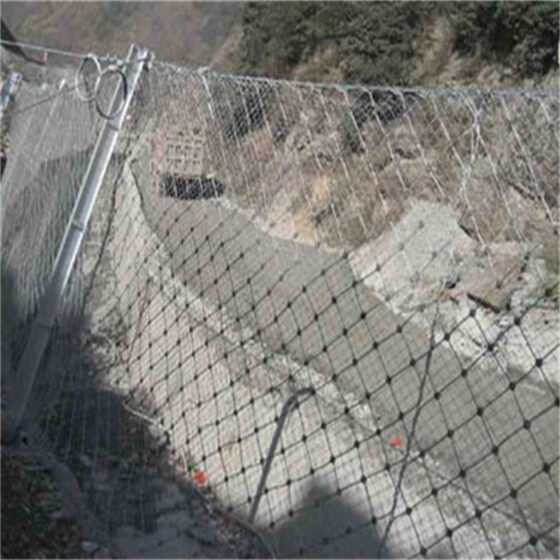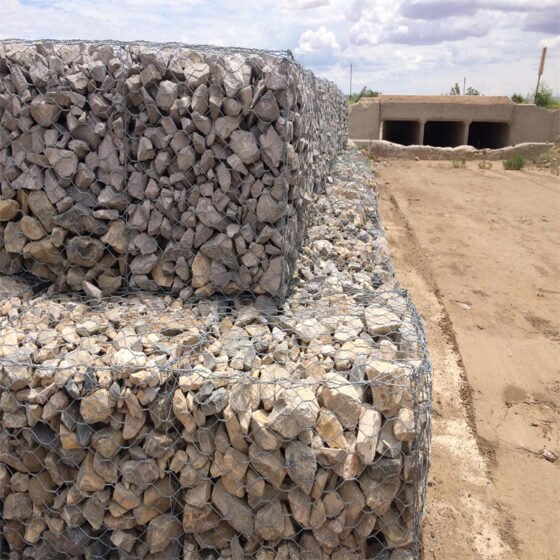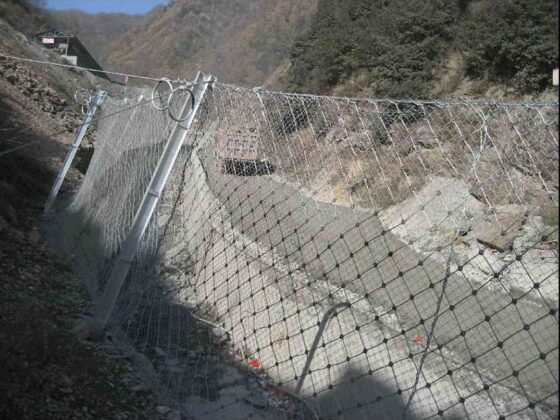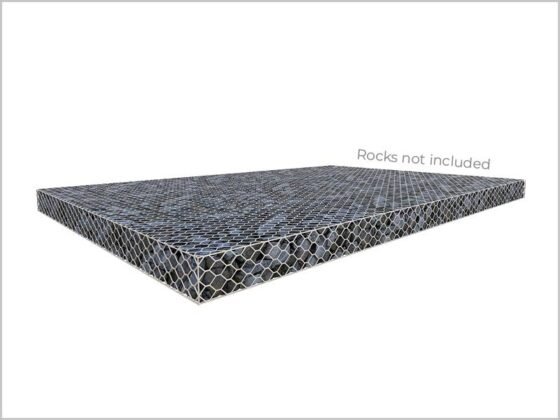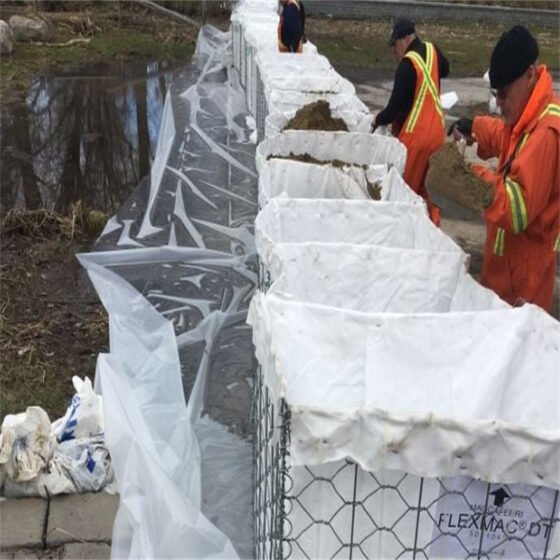A BMP gabion baskets are strong steel wire mesh that people twist together. They use these baskets to build walls, line channels, or control erosion and water flow. They fill the baskets with rocks, either from nearby or brought in, carefully placing them by hand for a natural look.
For places where it’s harsher, like really rough environments or places that need to last a long time, they apply a special coating called PoliMac®. It makes the gabions last longer by protecting them from things like rubbing, chemicals, and sunlight.
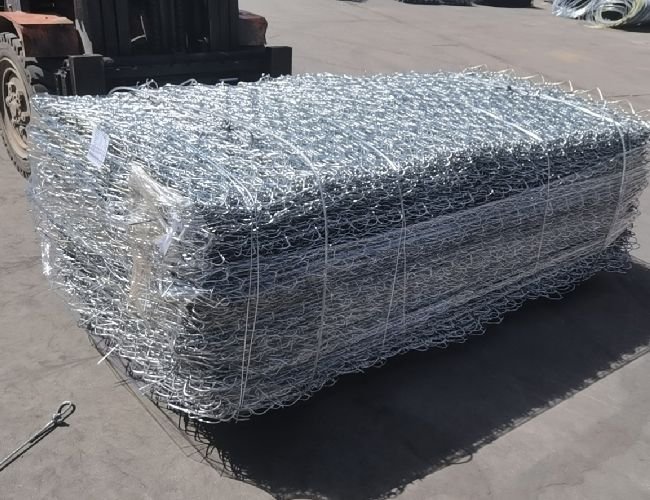
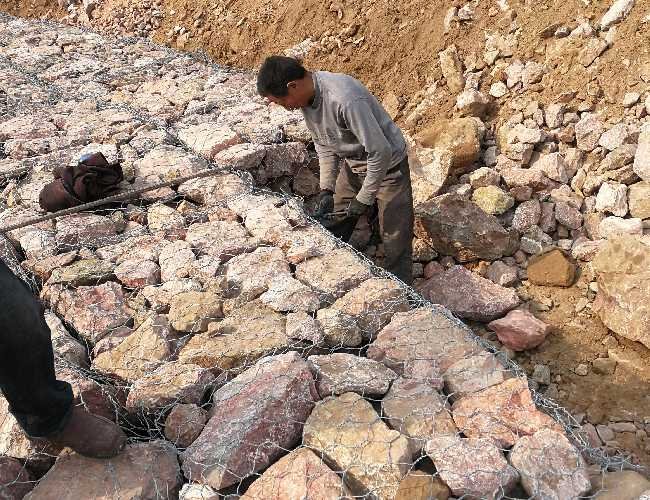
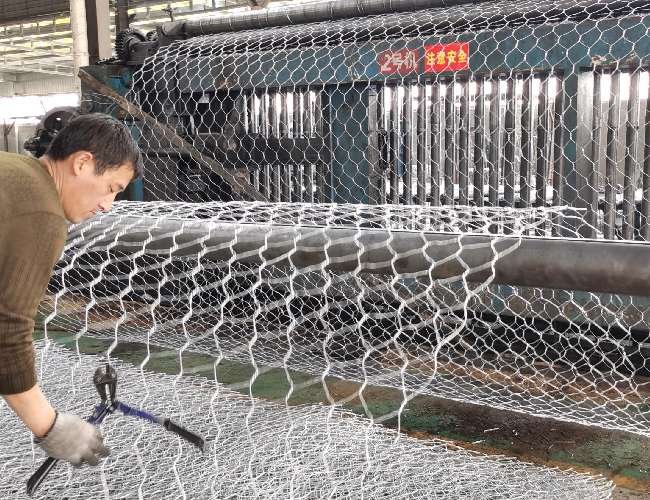
Gabion baskets are structures made of a type of strong, hexagonal wire mesh. People fill them with rocks at construction sites to build things like walls that hold back soil, linings for channels, and barriers to control water and prevent erosion.
Construction Details
Workers divide each gabion basket into compartments with partitions that are about 1 meter apart. They use a thicker wire along the edges of the mesh panels to make the structure stronger. You can find the standard sizes for these zinc-coated gabions in a list called Table 1.
Steel Wire Mesh
The steel wire mesh they use to make gabion baskets is very robust, more so than the standards require (EN 10223-3). The strength of this mesh matches what’s listed in Table 2, and they check this strength following the rules in EN 15381, Annex D.
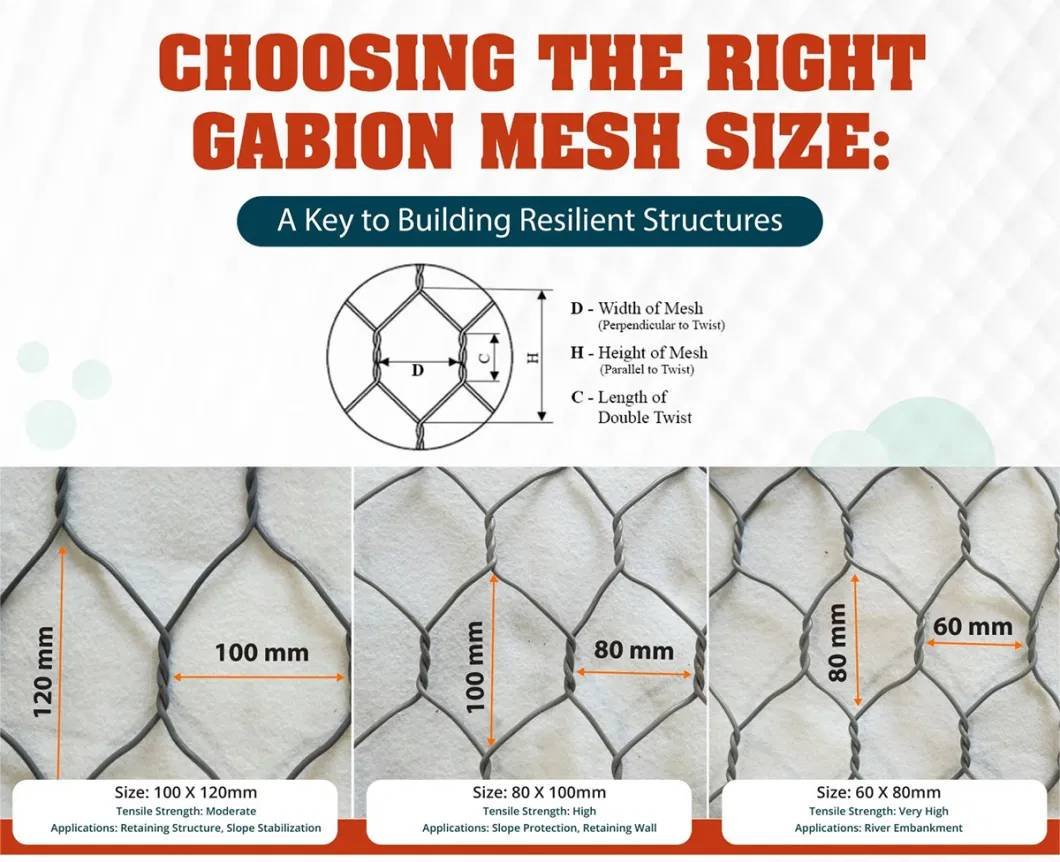
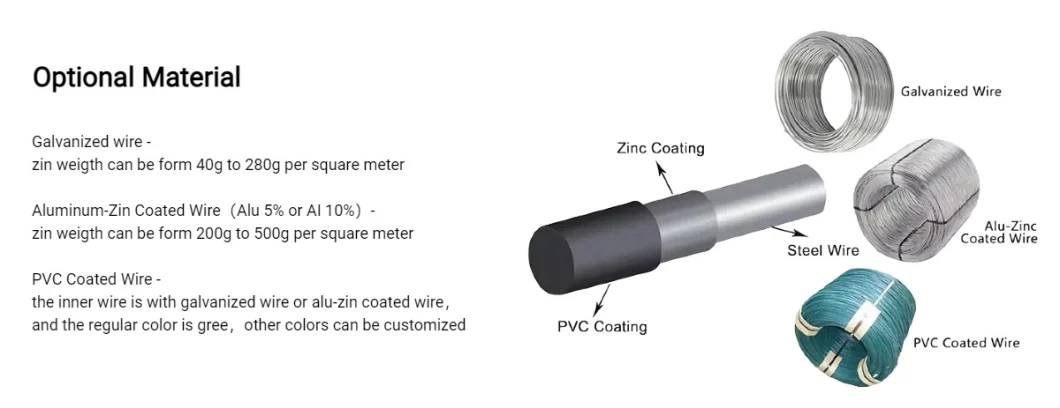
Quality Tests Before Use
Before they make the mesh, they test the steel wire to make sure it’s strong and flexible enough:
- Tensile Strength: The wire’s strength is between 380-550 N/mm². This is even stronger than the requirements listed in EN 10223-3.
- Elongation: The wire can stretch by at least 10%, which they confirm by testing a sample that’s at least 25 cm long.
- Zinc Coating: The amount of zinc on the wire is enough to meet the top standards (EN 10244-2, Table 1 – Class A).
- Zinc Adhesion: They wrap the wire six times around a rod that’s four times thicker than the wire to make sure the zinc coating sticks well. It shouldn’t flake or crack even if you rub it with your fingers, following the standard EN 10244.
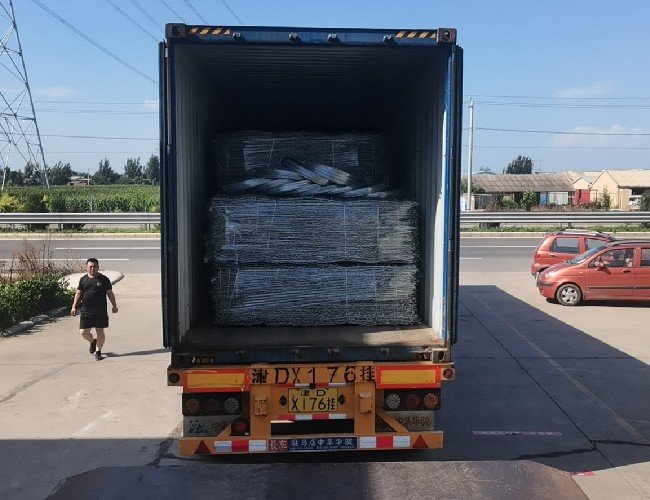
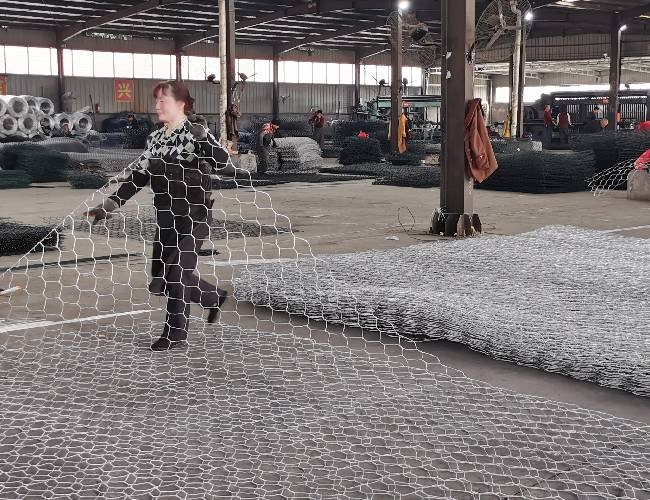
Here’s why people like using BMP gabion baskets:
- They’re really durable because of special coatings called GalMac and GalMac G10, which are way tougher than normal coatings.
- The PoliMac coating is even better, protecting against abrasion, chemicals, and sunlight much more than other coatings like PVC.
- They help plants grow and trap sediment, which is good for the environment.
- Making them releases way less carbon than making concrete walls.
- They’re flexible, so they can handle the ground moving without breaking.
- They’re cheaper than other types of walls because you don’t need as much stuff to build them.
- You can build them pretty high, up to 5-10 meters, and they have different options for the front.
- They’ve been tested and certified by BBA-HAPAS.
- They even have special tools you can rent to help put them together faster, like air-powered lacing tools.
- They have experts who can help plan and install them, and they can even make sample units on-site before starting.
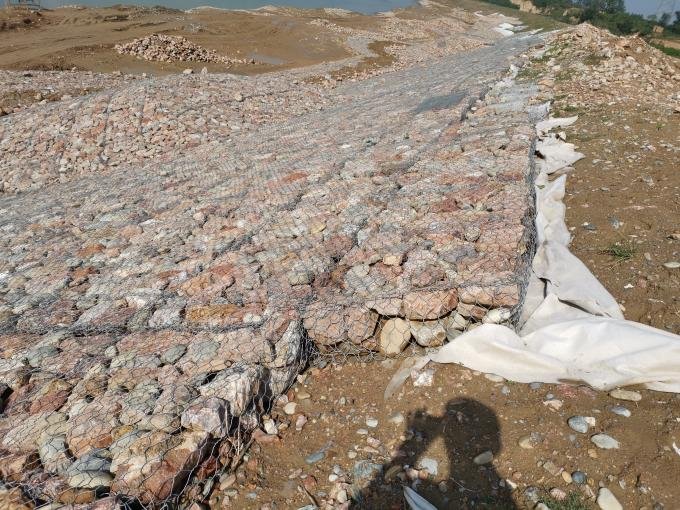
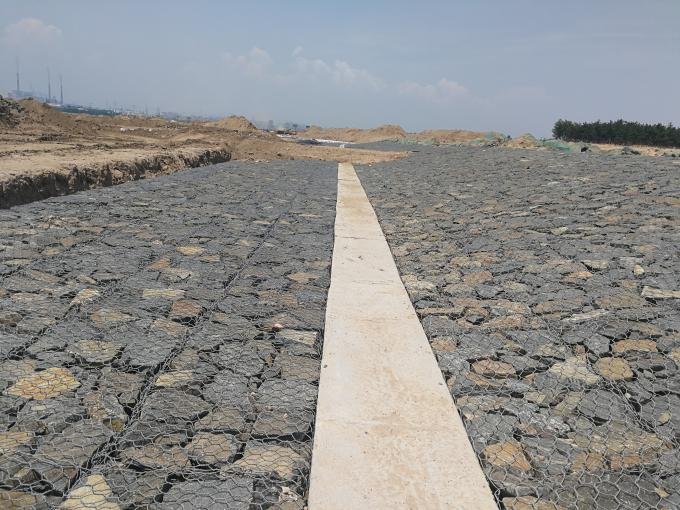
People use BMP gabion baskets for:
- Protecting coastlines and fixing problems caused by the sea.
- Building things like dams and channels to control water.
- Making hillsides stronger and stopping them from falling apart.
Table 1: Material and Surface Treatment for Anti-Corrosion
| Property | Specification |
|---|---|
| Material | Q195 Soft temper Carbon steel wire |
| Surface Treatment for Anti-Corrosion | |
| a- Zinc-coated wire | |
| b- Coated with Galfan (Zn-5A1-MM or Zn-10A1-MM) | |
| c- Zinc-coated and overcoated with PVC | |
| d- Galfan (Zn-5A1-MM or Zn-10A1-MM) coated overcoated with PVC |
Table 1 – Sizes of Gabions
| L=Length (m) | W=Width (m) | H=Height (m) | # of cells |
|---|---|---|---|
| 2 | 0.5 | 0.5 | 2 |
| 2 | 1 | 0.5 | 2 |
| 4 | 1 | 0.5 | 4 |
| 1 | 1 | 1 | 1 |
| 2 | 1 | 1 | 2 |
| 4 | 1 | 1 | 4 |
| 2 | 1.5 | 1 | 2 |
| 6 | 2 | 0.5 | 6 |
Note: All sizes and dimensions are nominal. Tolerances of ±5% of the width, height, and length of the gabions are permitted.
Table 2 – Standard Mesh Specification
| Type | D (mm) | Tolerance | Wire Diameter (mm) | Mesh Tensile Strength (kN/m) |
|---|---|---|---|---|
| 8×10 | 80 | +16% / -4% | 2.70 | 50 |
Table 3 – Standard Wire Diameters
| Wire Type | Wire Diameter (mm) | Tolerance (± mm) | Min. Quantity of Zinc (gr/m²) |
|---|---|---|---|
| Mesh Wire | 2.7 | 0.06 | 245 |
| Selvedge Wire | 3.4 | 0.07 | 265 |
| Lacing Wire | 2.2 | 0.06 | 230 |
Additional Text: Lacing Operations
Lacing operations can be made using the tools shown in Fig. 5. Galmac coated steel rings with the following specification can be used as an alternative to lacing wire when Zinc coated gabions are used:
- Diameter: 3.00 mm, ASTM A975-97, Table 1
- Tensile strength: 1380-1660 MPa, ASTM A764, Table 2, Class 1
- Coating thickness: 244g/m² ASTM A764, Table 7, Class 3
Spacing of the rings must not exceed 150 mm (Fig. 3).
Please contact Geofabrics for detailed installation information.
Additional Text: Quantity Request
When requesting a supply quotation, please specify:
- Size of units (length x width x height, see Table 1),
- Type of mesh,
- Type of coating.
Example: No. 100 gabions 2x1x1m – Mesh type 8×10 – Wire diam. 2.70mm – Zinc coated.
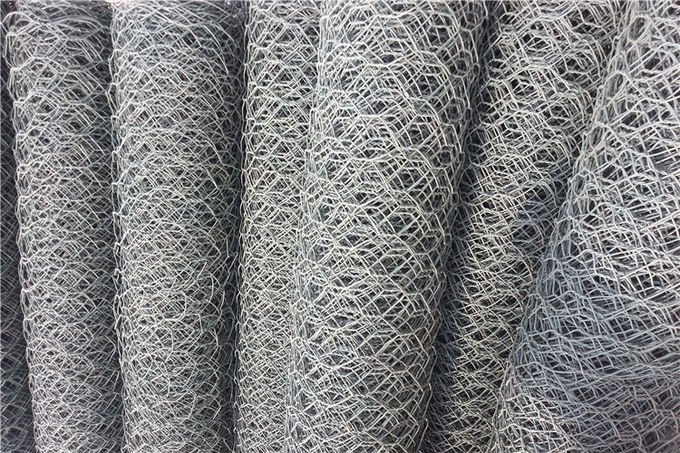
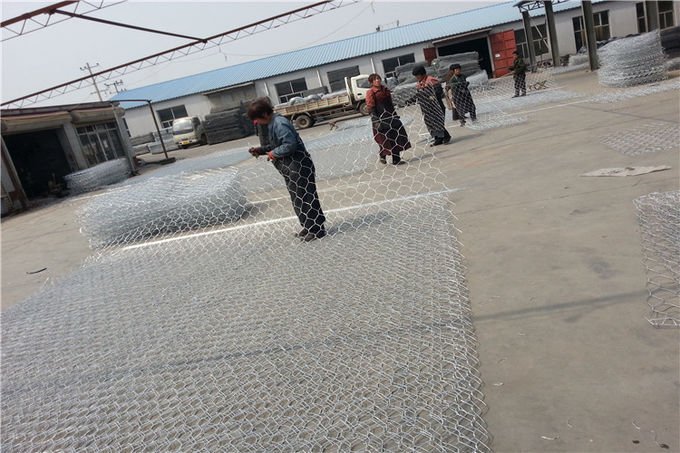
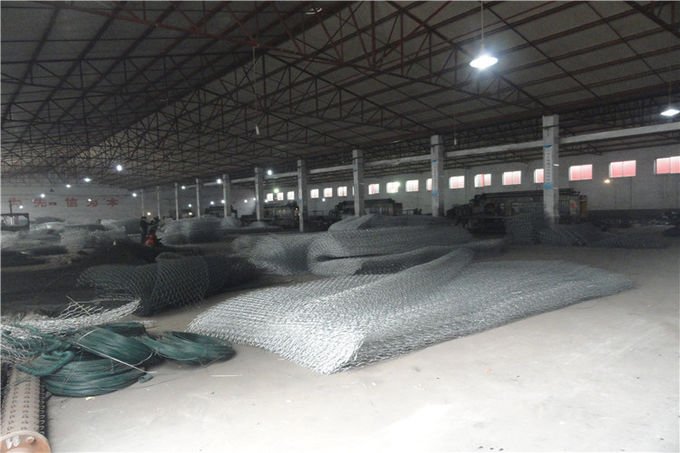
Installing Gabion Baskets: A Comprehensive Guide
Gabion baskets are essential components in construction and landscaping projects, particularly in creating sturdy and durable structures for erosion control and soil stabilization. Here’s a step-by-step guide on how to install gabion baskets effectively:
Preparation and Assembly
- Unpacking and Unfolding: Start by unpacking the gabions, which typically come bundled in pairs. On a hard, flat surface, unfold each gabion and stamp out any kinks to ensure creases are correctly positioned for basket formation.
- Basket Formation: Fold the side and end panels upright to form a rectangular basket. Join the top corners with the thick selvedge wire protruding from each panel corner to level the tops of all sides.
- Securing Corners: Begin wiring by securing the binding wire at the top corners of the panels. Loop and twist the wire together, then continue to lace the wire around the selvedges alternately with single and double loops at about 100 mm intervals. Ensure to fasten the wire securely at the bottom corner and tuck the loose end inside the gabion.
- Vertical Diaphragms: Lift any diaphragms into a vertical position and secure them to the side panels using the same wiring method.
Forming the Structure
- Pre-assembly: If feasible, wire small groups of gabion baskets together offsite. This pre-assembly can make the on-site construction process smoother, especially in challenging environments like water.
- Site Preparation: Level the ground as much as possible before placing the gabion baskets. It’s difficult to adjust the ground once the gabions are positioned.
- Positioning and Linking: Place the gabion baskets on the leveled ground, ensuring they are aligned properly. Wire the gabion baskets together using the same method as in the assembly phase. Align gabion baskets front to front and back to back to facilitate later securing of the lids.
Stretching and Filling
- Stretching Gabions: Before filling, secure the gabion basket in place by driving rods through the corners into the ground. Stretch the opposite end of the gabion by inserting bars into the bottom corners and levering them forward. Maintain this tension until the gabion has been filled.
- Filling Material: Fill the gabion baskets with rocks not exceeding 250 mm in size, ideally between 125 mm and 200 mm. Ensure the rocks are packed tightly to minimize voids. For better stability, initially fill each compartment one-third full, adding horizontal bracing wires before filling further.
Securing the gabion baskets Lid
- Closing the Lid: After filling, stretch the lids tightly over the top and wire them down. Start by temporarily securing the corners to ensure complete coverage.
- Final Adjustments: If necessary, adjust the amount of filling at the top to prevent over-stretching the lid. Ensure the fill is slightly above the top of the mesh to allow for settlement.
Tool Recommendations
- Pliers: Preferably use long-nose pliers, about 10 inches.
- Crowbars: Essential for closing down the lids.
- Lid Closer: A specialized tool that helps in drawing the lid and side panel selvedges together for quick and secure lacing.
Packing and shipping
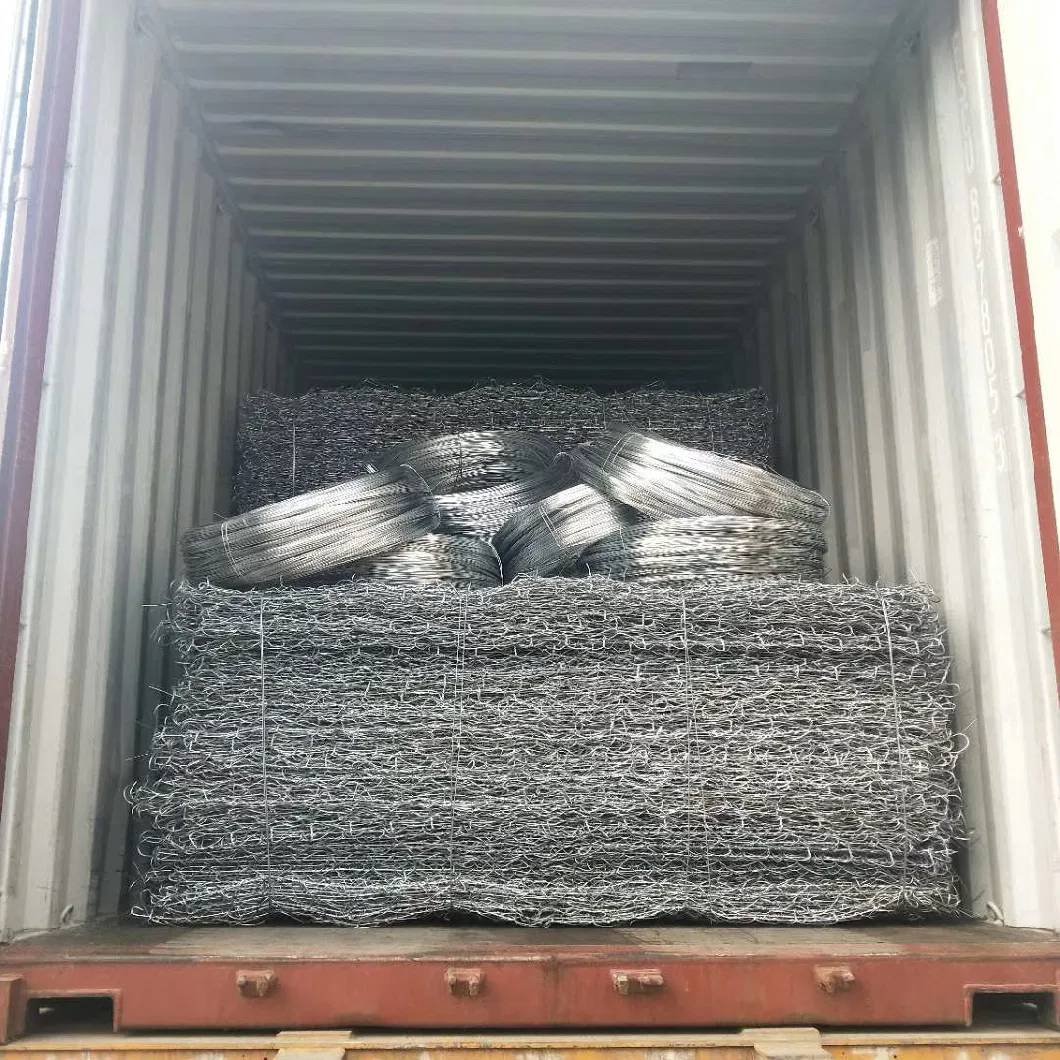
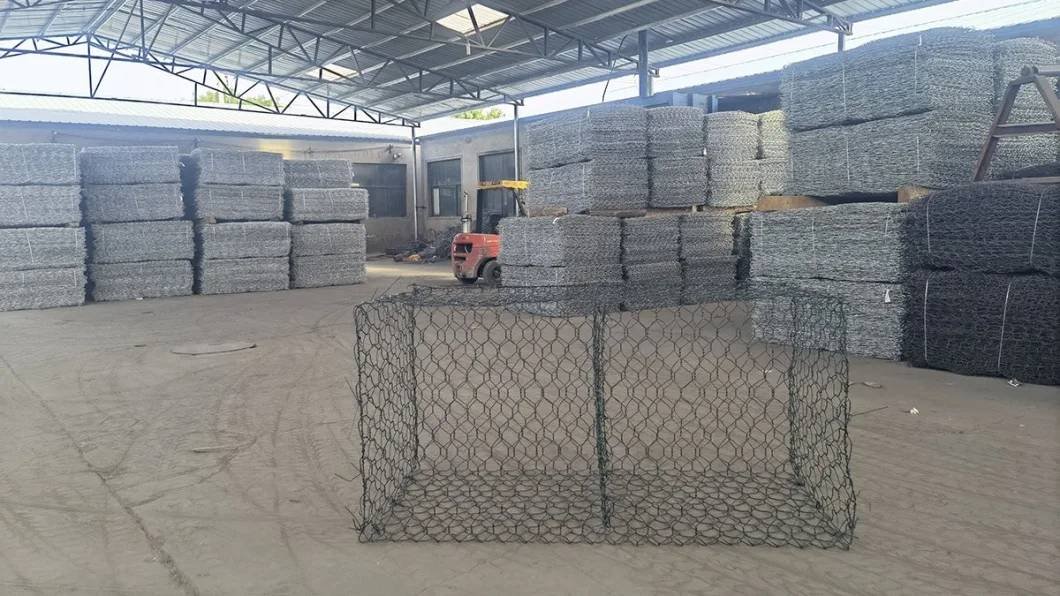
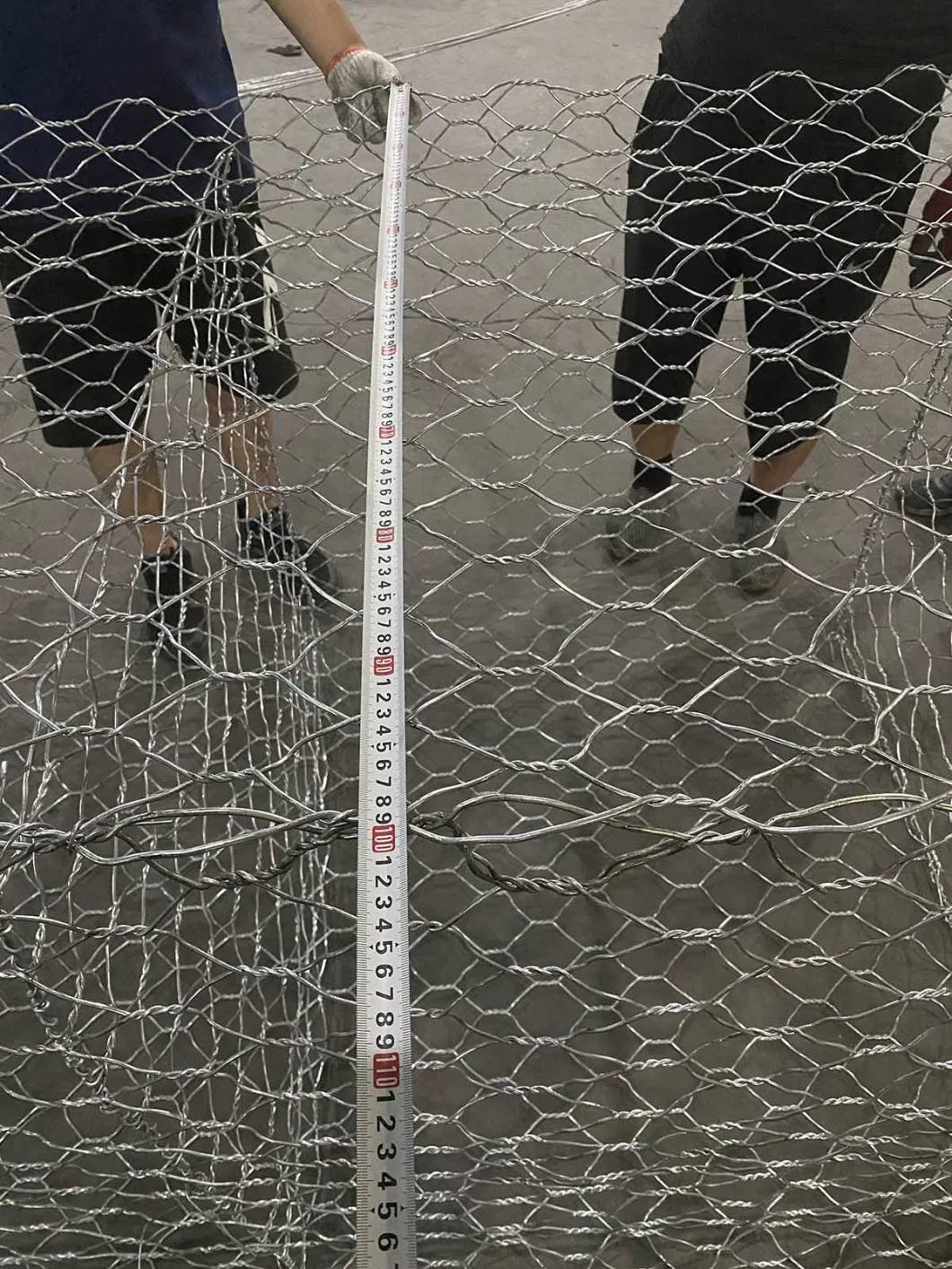
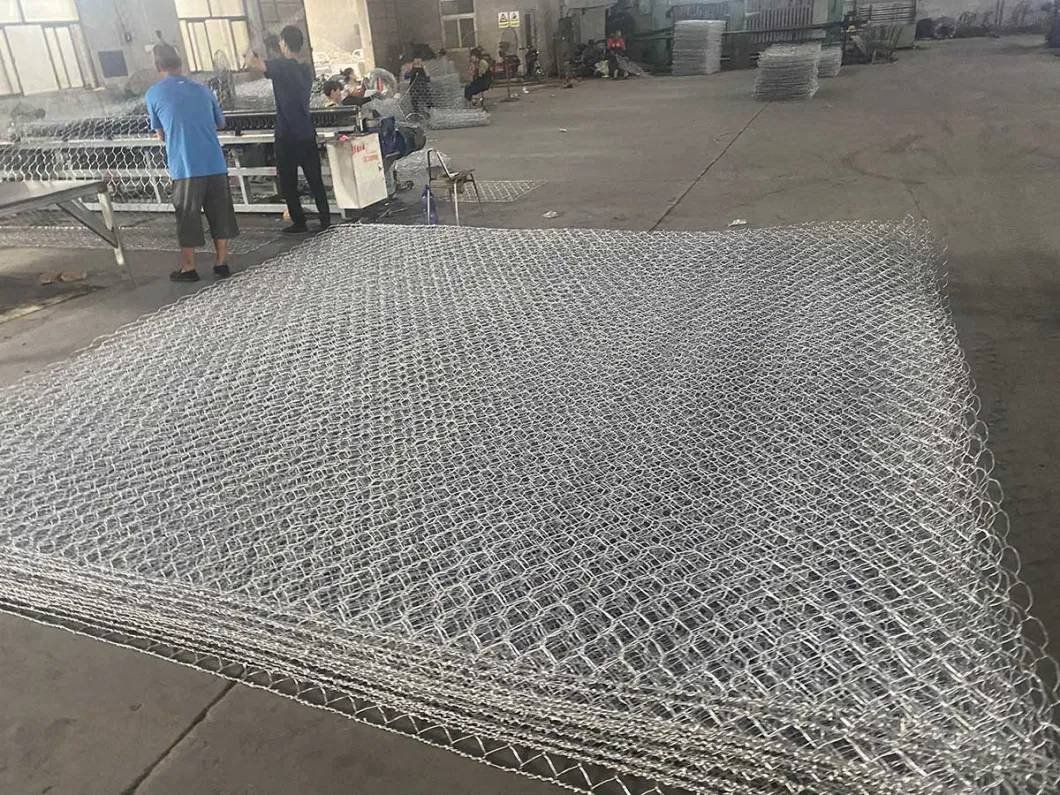
Special Considerations gabion baskets
- Continuous Tensioning: For longer, straight structures, consider using a Tirfor strainer to apply tension across a row of gabion baskets before filling.
- Small Fill Adjustment: In cases where large fill material is scarce, line the compartment with larger material and fill the interior with smaller rocks.
Installing gabion baskets requires meticulous attention to the tightness of the mesh and wiring to ensure the stability and longevity of the structure. Following these guidelines will help create effective and visually pleasing gabion installations for various environmental and structural applications.
 BMP Slope Protection
BMP Slope Protection
